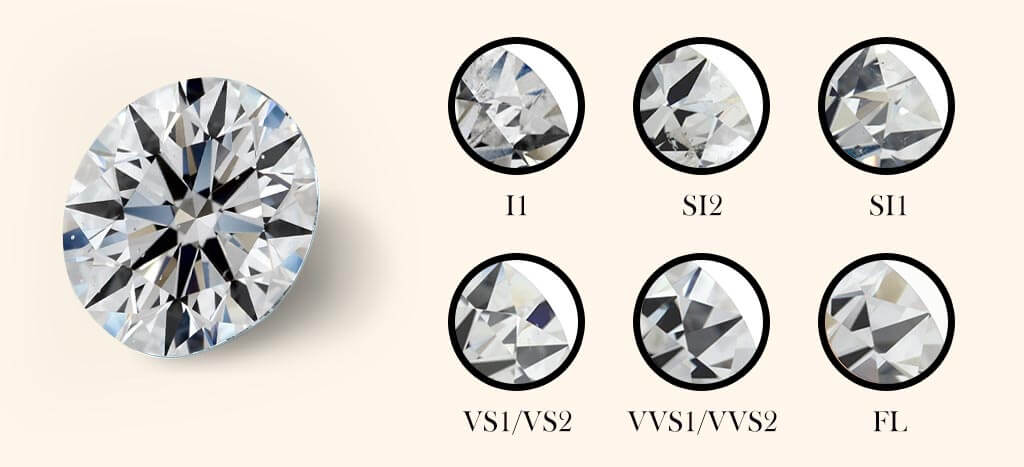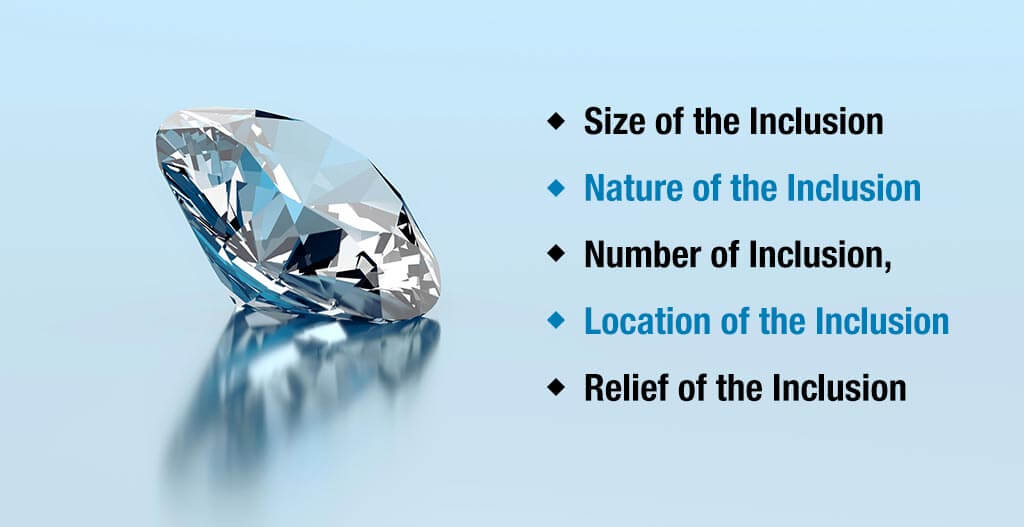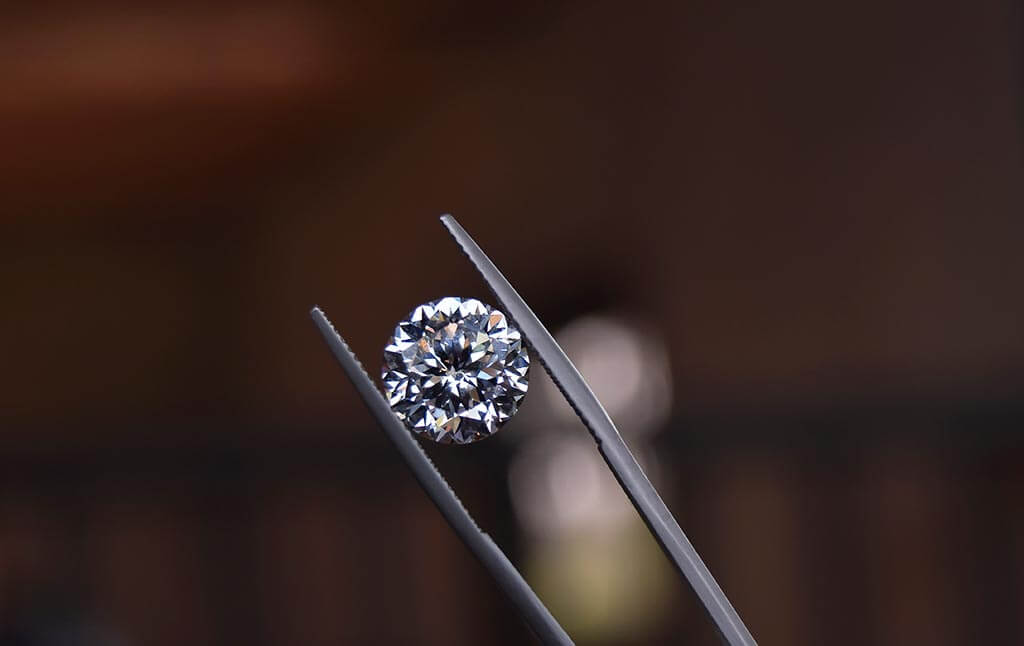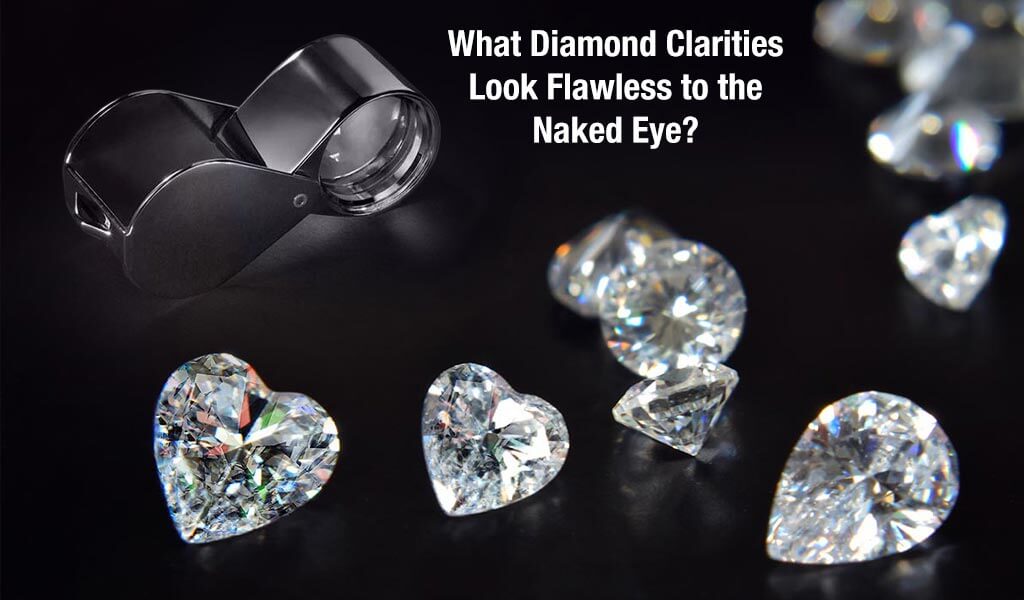According to organizations like the GIA and AGS (specialized organizations consisting of gemology scientists and experts). A diamond’s originality and purity are determined by something that is termed as the 4C’s. Each of the C’s stands for Cut, Color, Clarity, and Carat. Here, we will be discussing the grade called “Clarity” and will look deeper into its importance for scaling a diamond clarities.
Diamond Clarities

The visual appearance of a diamond is expressed in terms of some qualitative terminologies. Which altogether, is expressed as diamond clarities. In a much simpler sense, it can be said that the clarity grading of a diamond is directly proportional to its inclusions and flaws. The higher the number of imperfections and inclusions, the worse clarity grading of the diamond. While much of these flaws are not visible to the naked eye itself, yet it does not mean that the diamond is flawless and hence this “clarity” grading has a huge impact on the value of the diamond.
The diamonds which are naturally formed are generally formed at a depth range of about 80 to 120 miles, inside the earth’s mantle and it requires a huge amount of temperature and pressure for them to grow up. While the total growth process of these diamonds takes a period of about one to three billion years, very few of them grow out to be flawless and perfect. Most of the stones contain at least any one type of inclusion in them; if not more.
Now, for the ease and convenience of the customers as well as the retailers, the GIA has established certain terminologies indicating the clarity quality of the diamonds. Each of these following categories of diamonds will differ from each other regarding the type of blemishes and inclusions in them. They are:
1. IF or Internally Flawless/ FL or Flawless
Such diamonds are of the premium quality and extremely rare information. They don’t have any type of external or internal inclusions in them.
2. VVS1 or Very Very Small Inclusions 1
This is the first category of the VVS grade. These diamonds contain such small inclusions that they are not even visible even under 10x magnification. Are of premium quality and hence are very costly.
3. VVS2 or Very Very Small Inclusions 2
The second category of VVS grade. The inclusions are very hard to find when examined under 10x magnification loupe, and hence usually takes some time to locate, even for the experts. Such diamonds too are very expensive.
4. VS1 or Very Small Inclusions 1
VS1 diamonds also contain minute inclusions which are hard to find even under 10x zoom (jeweler’s loupe). But, these inclusions are comparatively easier to find than the former grade.
5. VS2 or Very Small Inclusions 2
These are the diamonds that contain easily noticeable inclusions. But, noticeable only under 10x magnification. The spotting of such inclusions is pretty easy for the experts unless they are located in a hideous spot within the diamond.
6. SI1 or Small Inclusions 1
For these diamonds, the inclusions are pretty easy to locate and except the step cuts, this particular grade consists of most of the eye clean diamonds.
7. SI2 or Small Inclusions 2
Inclusions are seen under the 10x loupe and most of the diamonds of this grade would show up the flaws even to the naked eye.
8. I1 or Inclusions 1
The inclusions in this particular category are even more viewable; clearer than the former grade. Does not typically consist of eye-clean diamonds.
9. I2 or Inclusions 2 and I3 or Inclusions 3
Are the worst possible graded diamonds with the most obvious inclusions. Diamonds of such grades are usually not recommended.
Now, we know exactly what kinds of inclusions fall under which clarity grade. But, for a deeper understanding, we must know what are the points that decide for a certain diamond with a particular inclusion will fall under a certain category.
Factors Determining the Diamond Clarities Grade

Below, we shall be discussing the five basic factors which judge the grading of a diamond’s clarity. Each of these factors plays an important role and hence it is recommended that one gets a proper idea about each of them:
- The Size of the Inclusion-
The inclusion size is very important as this is directly responsible for the clarity grading value of a diamond.
- The Nature of the Inclusion
As the name says, this simply refers to the type of inclusion in the stone. Apart from the type, depth of the inclusion also falls in this criterion.
- The Number of Inclusion
Yes, the total number of inclusions in the diamond also determines its clarity grading.
- The Location of the Inclusion
The closer the inclusion to the table center, the higher the grading would be impacted. It is necessary to pinpoint exactly where the inclusion is situated inside the stone.
- The Relief of the Inclusion
It means how much notice is the inclusion in comparison to the diamond itself. It is also directly proportional to the darkness of the color of the diamond.
Which diamond clarities look Flawless to the Naked Eye?

If one is confused with such queries, they need not worry as we will be pointing out exactly those of the clarity grades contain the “Eye Clean” diamonds. Just because the term came up, let’s point out what eye clean means. The term refers to those diamonds which looks clean and pure when they are looked at from a normal point of view, or with the naked eye only. A diamond may show inclusions in its report, but one just won’t be able to see those flaws unless they have suitable magnifying devices with them. “Eye Clean” diamonds are best preferred as day to day usable diamonds, as the ordinary folks won’t be able to differentiate between such a diamond and a premium one.
Now, to answer the question; according to AGS and GIA, the absolute grades which are considered eye clean are Flawless (FL), Internally Flawless (IF), Very Very Slightly Included (VVS1 and VVS2) and lastly Very Slightly Included (VS1 and VS2).
For the other remaining grades, the Slightly Included (SI1 and SI2) ones are not guaranteed to be eye clean and the Included (I1, I2, and I3) ones are not to contain any eye-clean diamonds.
Before concluding, we would like to say that, just like any other product in the market, diamonds too are retail products. Hence, one should always look for the perfect blend in the quality and cost factor before going for any diamond stone. By doing so, will result in optimal mental satisfaction and the best value for the purchase.

